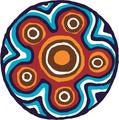Year 1 Term 2 Overviews

Dear Year 1 Families,
Welcome back to school for Term 2. We have been very proud of the Year 1 student’s transition back into the routines and they have already demonstrated their growth since Prep!
Curriculum:
Literacy
In Reading, students will understand the importance of using our previous life experiences alongside the author's picture and word clues to make inferences about the character and the events of fiction texts. Additionally, while reading fiction texts students will identify different types of punctuation, such as bold words and italic words, and experiment with changing their tone of voice to match the punctuation. They will use these skills to help them retell a story in their own words and identify ways an author makes the text funny. Students will explore different organisational structures of non-fiction texts and understand the purpose of different features that authors use, such as photographs, headings, glossary and facts, to make the information easier to understand. Students will build their understanding of these different features and use them to search for, and find different facts, and summarise the key information. They will think about their prior knowledge about a topic, and use it to identify things they didnt know before reading, and identify new information learnt. Throughout the term students will identify different words with a range of spelling patterns and recognise words with plurals and suffixes and how this changes the meaning of a word. Students will practise solving words using parts of larger words and connect them to other words.
In writing, students will be using mentor texts to support their development of ideas, word choice, sentence fluency and organisation. Throughout the term students will investigate how an author uses different vocabulary to help their readers visualise as well as uses punctuation to create flow in their writing. Students will focus on real life experience to assist them with narratives and information reports. Students will continue to build on their ability to use punctuation such as full stops and capital letters correctly. Each week, students will engage in SMART spelling and phonics to help improve their understanding of spelling patterns and letter formation.
Numeracy
This term, Year 1 students will explore the concept of time by describing the duration of familiar tasks, and sequencing events using years, months, weeks, days and hours. They will learn how to tell time to the hour, and half-hour using analogue and digital clocks. Students will solve practical problems involving equal sharing and grouping by partitioning collections into equal groups, using number knowledge and skip counting. Students will continue to practise giving and following directions using specific vocabulary, such as left and right, to successfully reach a destination. Place value will continue to be a core focus area throughout the whole year. Year 1 students will investigate multiple strategies for counting efficiently (ones, twos, fives and tens), describing counting patterns and recognising the importance of creating repeating patterns with numbers and objects to solve problems. Year 1’s will finish the term by exploring and practising different additive and subtraction strategies with numbers within 20, using real life examples and using physical mathematical materials.
Inquiry
Throughout this inquiry unit, Year 1 students will lead the direction of the inquiry based on their wonderings, creativity and critical thinking to investigate the driving statement: Our senses help inform us about the world. Students will investigate how our senses are used to learn about the world around us: our eyes to detect light, our ears to detect sound, touch to feel vibrations, our noses to detect smell and our tongues to detect taste, by exploring a variety of sensory situations and identifying what they see, hear, smell, feel and taste. They will rank the senses from most needed to least and discuss what it means for a sense to be needed. Students will discuss and research how we help people who cannot see or hear by exploring the role of a service dog. Students will discuss, reflect and share their new knowledge using posters, venn diagrams and drawings.
Ways to Help Your Child At Home:
Home Reading - We have started our Home Reading program. The expectation is for your child to read their take home book 5 nights a week, answer some comprehension questions that an older family member asks them and record the title, date and a comment in the yellow reading journal themselves. Take home books are for enjoyment and for your child to practise their reading strategies, and are not meant to be a challenging task for your child. In addition to the Home Reading program, Wushka is an extremely valuable resource to help your child practise their reading.
Learning Goals - Your child’s individualised learning goals are listed on Compass. There is a Reading goal, a Writing goal, a Maths goal, and a goal focussed on dispositions and skills around social learning for your child. Please read these and support your child by going through the suggested strategies to help at home. These goals will be updated in Weeks 5 and 11, and you will also be informed of your child’s achievement of these goals.
Thank you for your continued support with your child’s learning.
Year 1 Team
